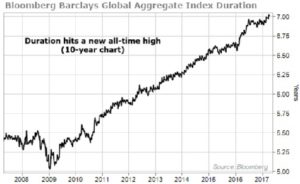
Every asset and investment is inherently fraught with risks. These include price risk, theft, fraud, damage, obsolescence, bankruptcy, hyper-inflation, taxes, mismanagement, stock market crash, new regulations, interest-rate risk, and many others. There is no single location for money where it is prudent to place all of it and expect it to earn money, free from all risks. Not gold, not cash under your mattress, not even stock in the legendary company, Berkshire Hathaway.
Why is a single location for money such an imprudent action to take? Because a single unfavorable event can wipe you out, take you out of the investor game, and destroy all that you’ve worked to accumulate. It is similar to gambling all your money by putting it on the color red and spinning the roulette wheel. Although any particular investment may play out over a longer time-frame, the concept is identical – your gamble either wins or loses based upon the outcome of a single item. Going all in is the opposite of your most important assignment as a money manager: to safeguard your savings and investments.
When a Ponzi scheme inevitably collapses, there will be victims revealed who had put their entire life savings into the fraudulent investment. When a stock goes bankrupt, some reporter will find an investor who had placed all of their retirement money into it. When a string of homes is leveled by a tornado, anyone who held cash in a secret hiding spot in their home lost it all.
This week, there is a story on bitcoin news sites of someone with a terminal illness who just borrowed $325,000 on his home in order to put it all into bitcoin. He did this based upon the hope that bitcoin will launch from its current $1,800 price to beyond $10,000; whereupon he would sell the bitcoin. I do not know if this story is true, but there are likely to be people who have done this.
The prudent way to hold your savings and investments is to place them in several different types of assets, and additionally, diversify among those assets. The term “asset type” refers to items such as: real estate, stocks, bonds, precious metals, cash, cash equivalents like savings accounts or Treasury bills, private placements, or specialty ETFs or mutual funds (such as commodities or unique investment strategies). There are many alternative asset classes as well: hedge funds, options, currencies, futures, and collectibles from stamps to wine, art, and watches. I probably have 6 different asset types where I place money so that a catastrophe in one or two of them will not permanently impair my net worth. There is no single asset or investment that is so attractive and risk-free that anyone should “go all-in,” let alone leverage up by borrowing money to purchase even more of that investment. Wall Street doesn’t go a few years without a collapsed hedge funds because it went all in on a single investment idea: Greek economy turnaround, a sovereign bailout that didn’t materialize, a technology that failed, a sector that ‘should’ have gone up/down but didn’t, and many more. Do not follow their folly, going all in is the path to going broke.










